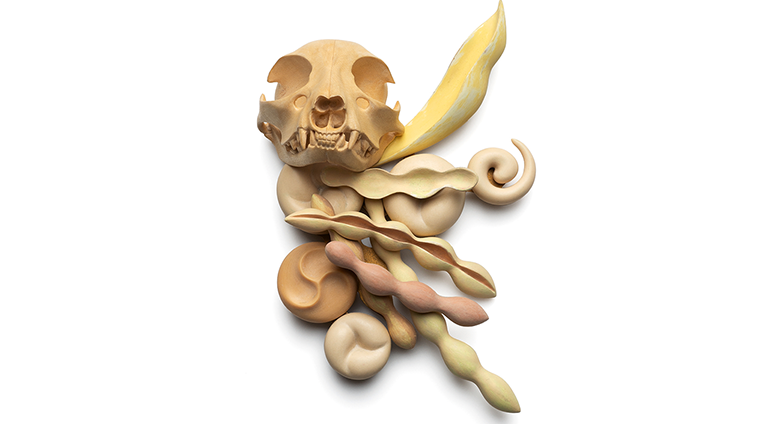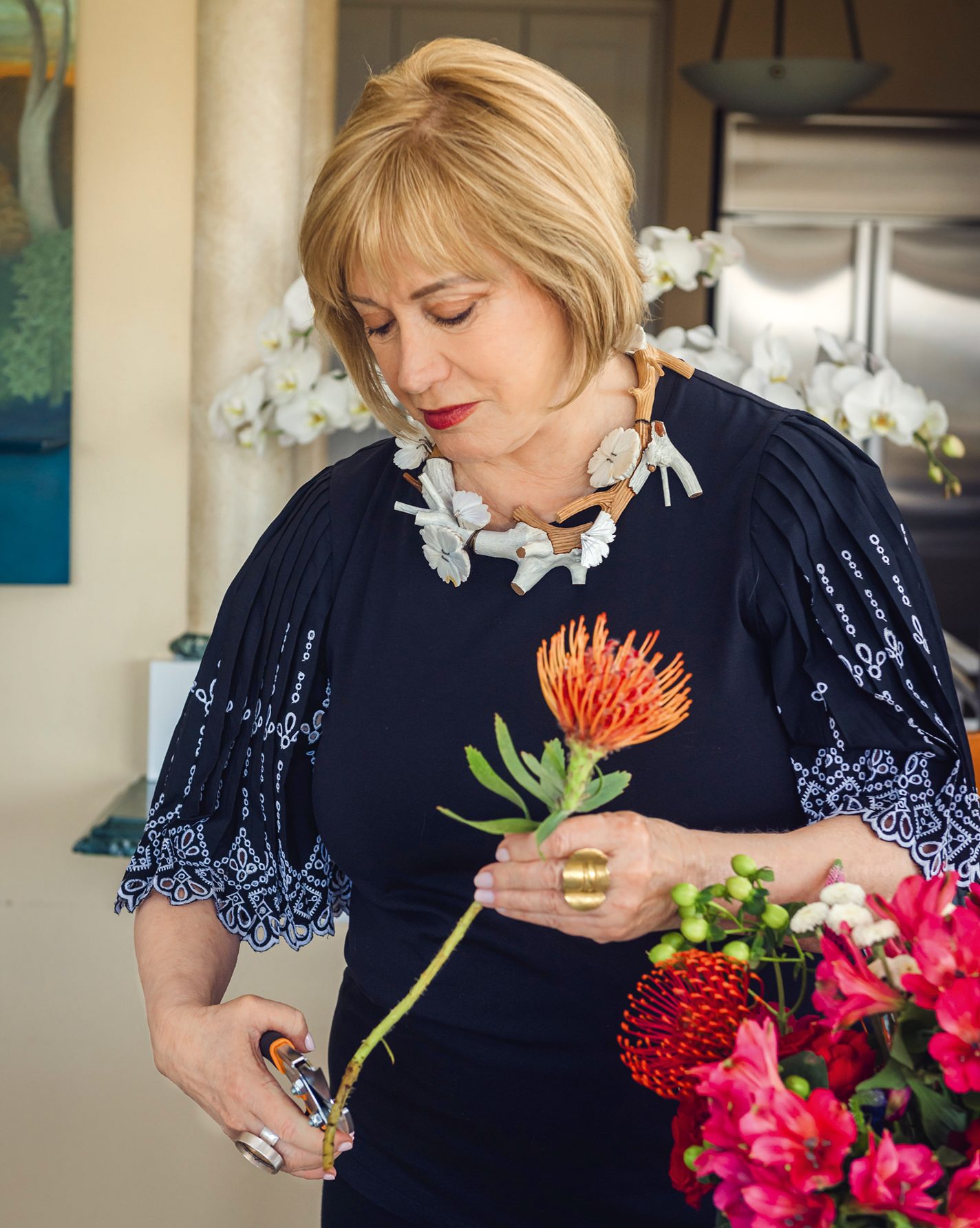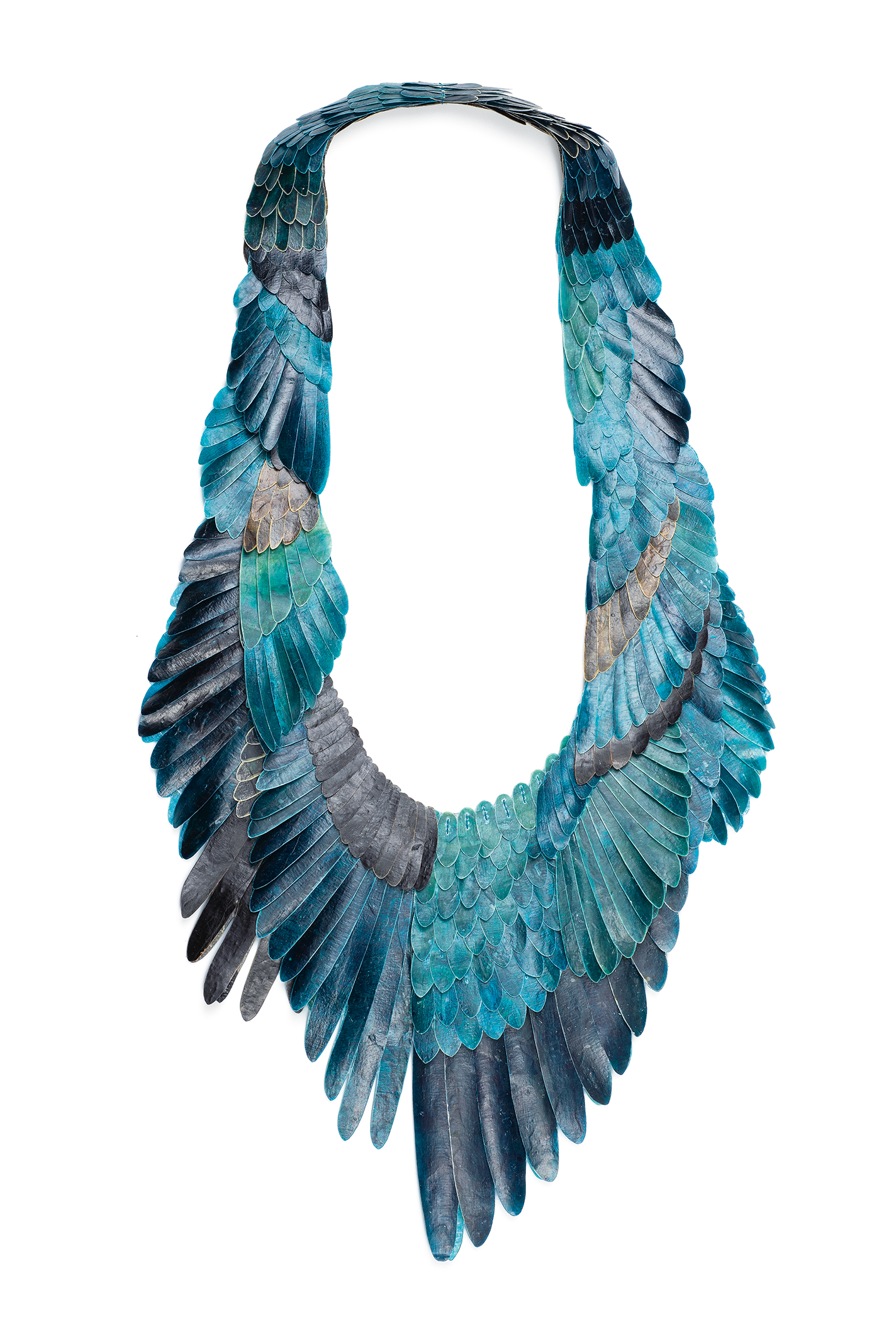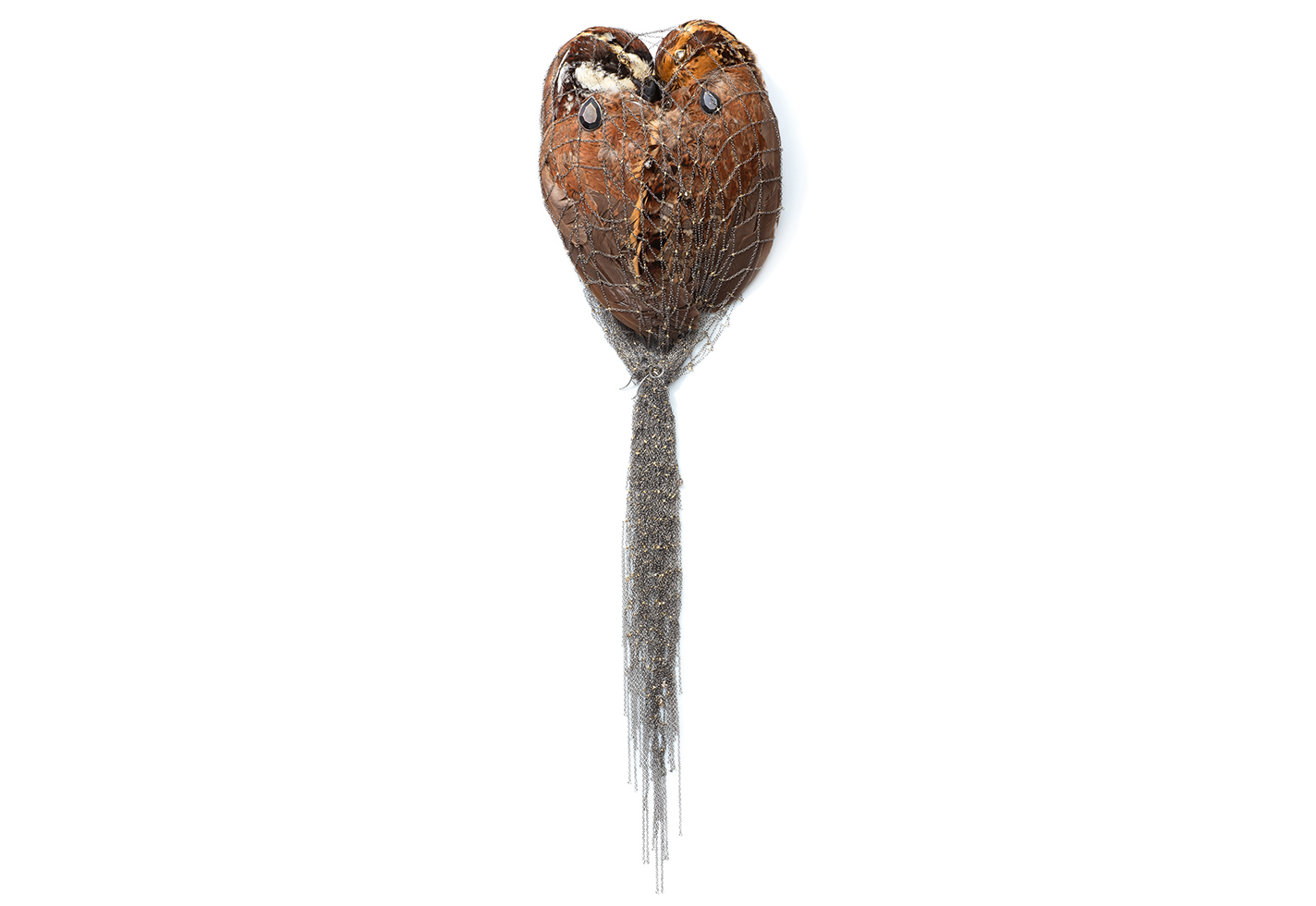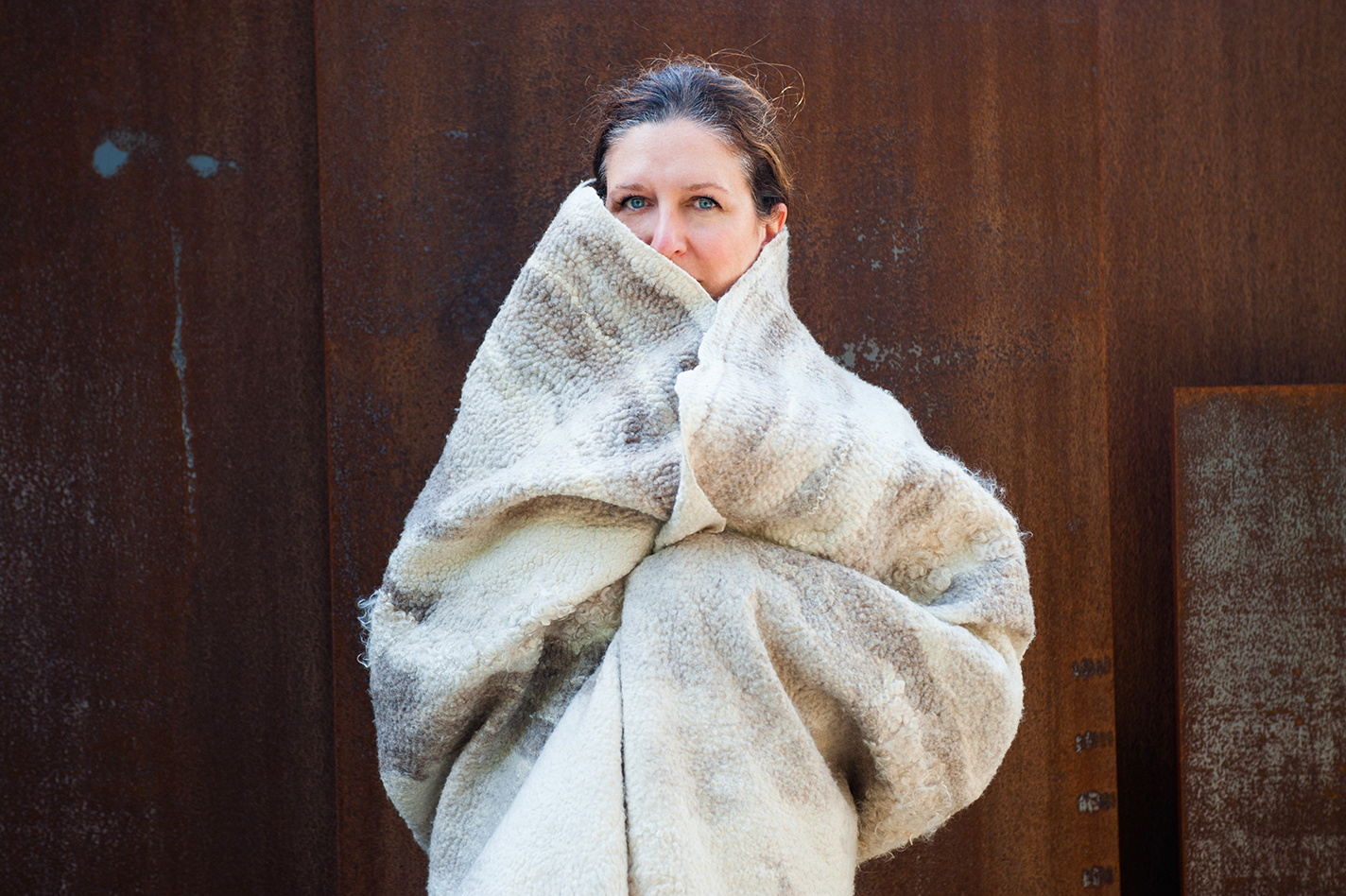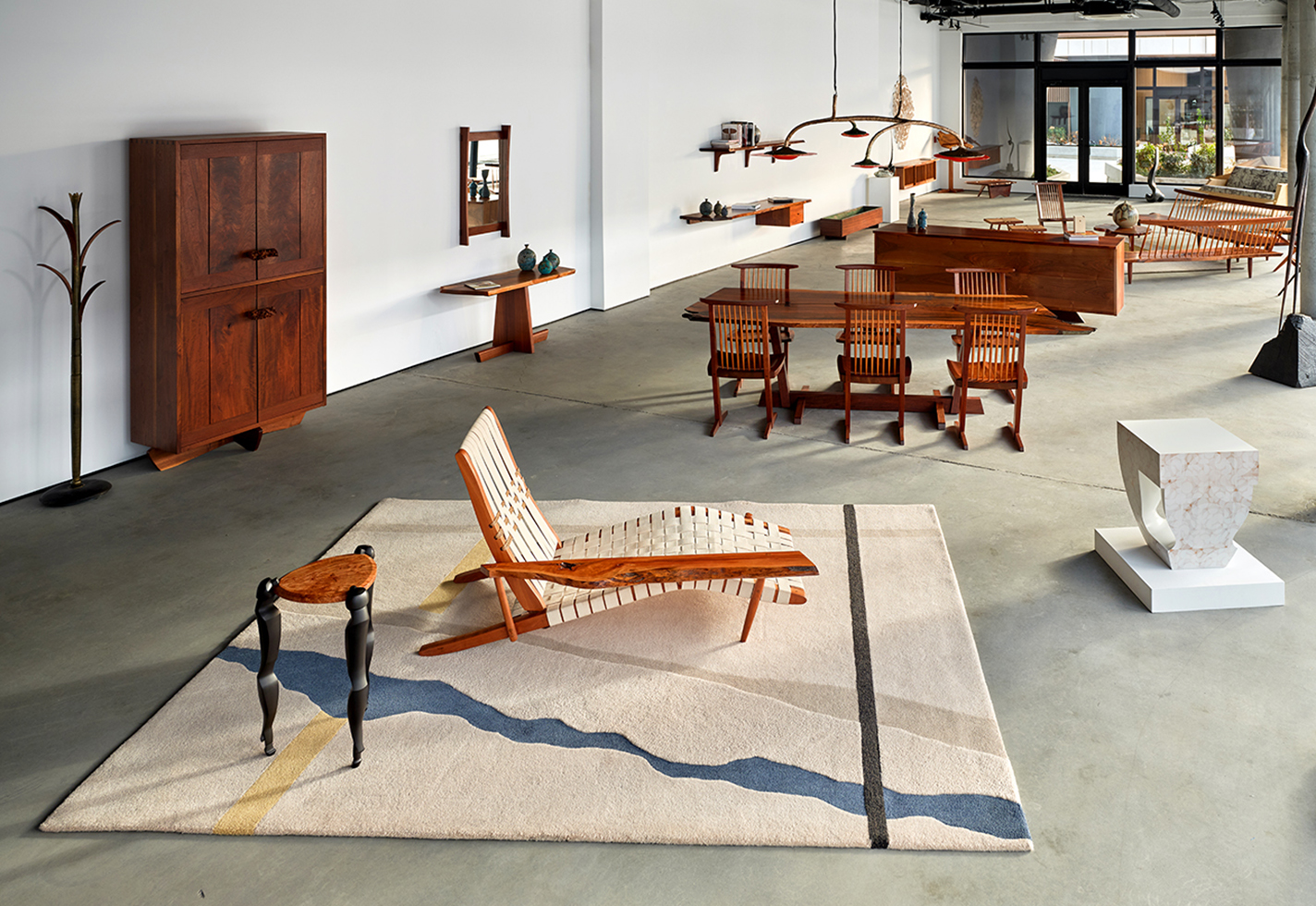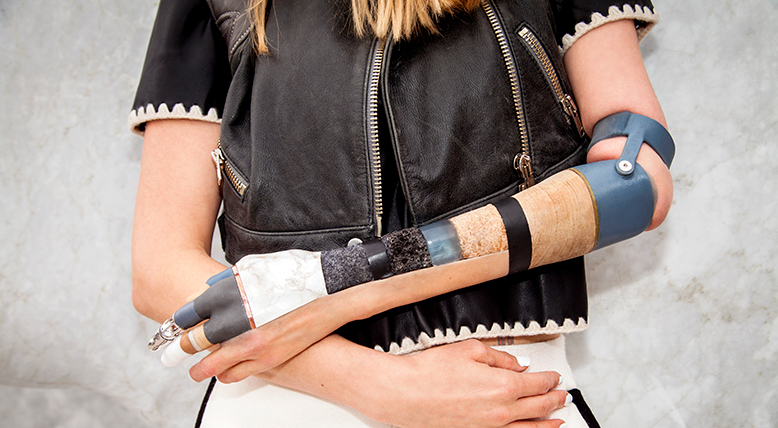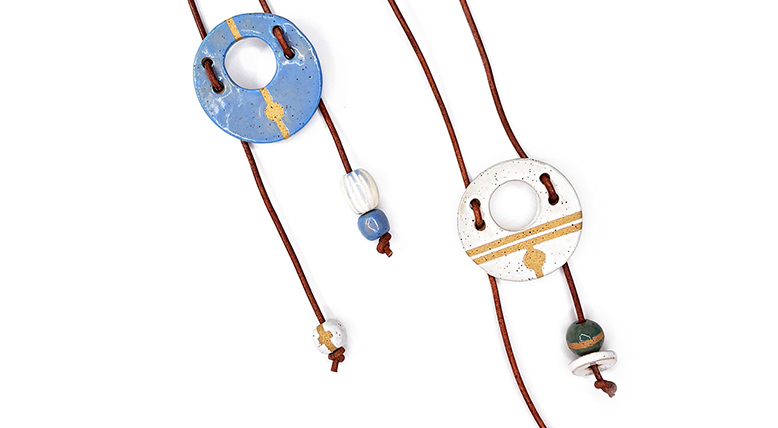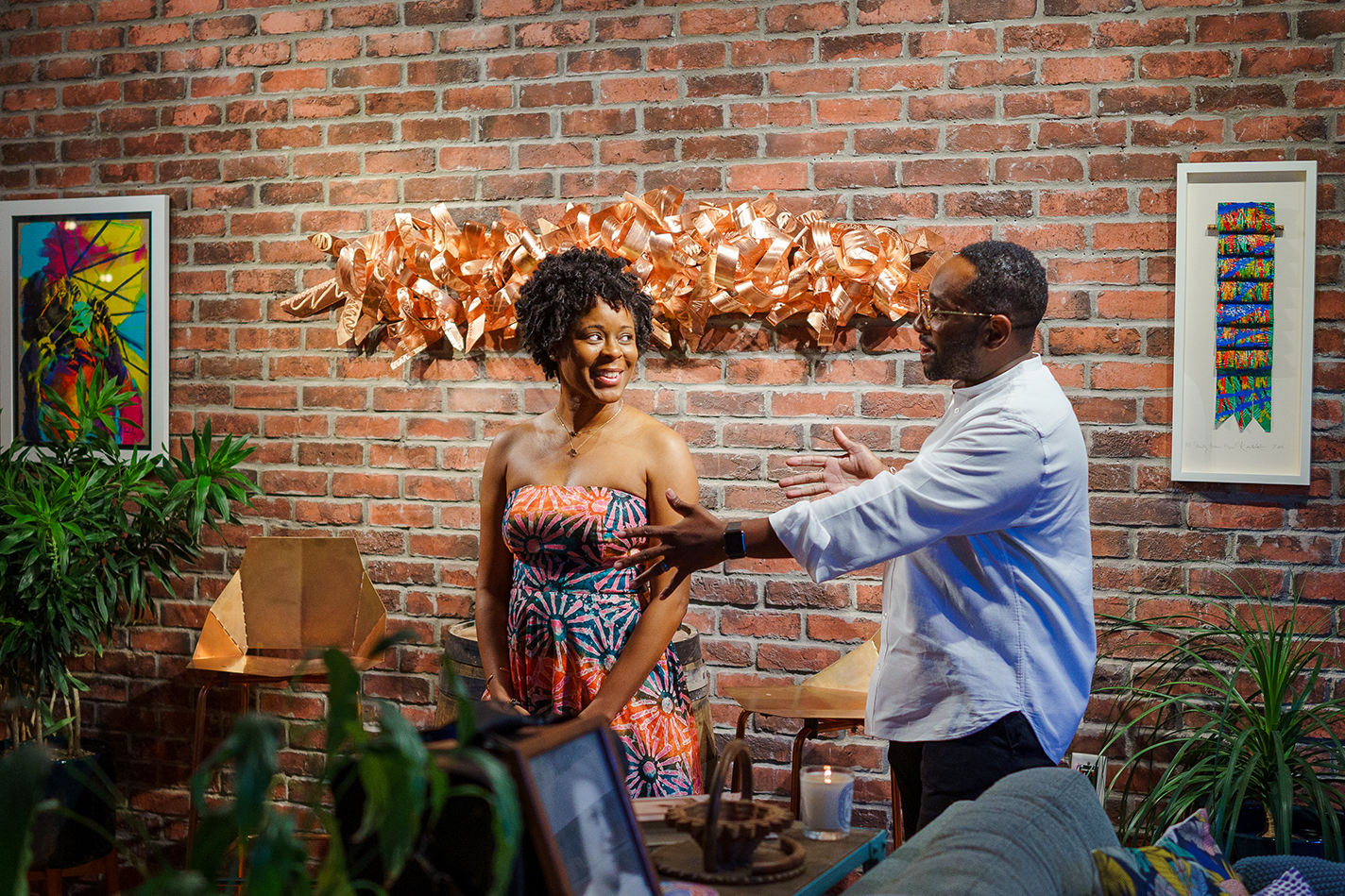Jewelry is meant to be worn, but to what end? In many cultures, draping a woman in jewelry offers visual proof of a family’s wealth—the more extravagant, the better. The wearer’s own sensory experience is of little consequence.
Jewelry aficionado Susan Beech of Tiburon, California, defies that traditional conception. Since becoming a serious collector in the late 1990s, she has built an edgy collection around the “tingle” she feels upon seeing and donning a potential new acquisition, which is as likely constructed from thumbtacks or plastic yogurt containers as from precious metals or pearls. The cover of Feast: Contemporary Jewelry from the Susan Beech Collection (Arnoldsche Art Publishers, 2025) immediately introduces her aesthetic. Among other pieces, Beech is shown wearing David Bielander’s titanium Python necklace (2019). The snake’s body encircles her waist, goes up over her shoulder, and drapes down the front of her torso. Her hand grasps its phallic head. Beech willingly channels the femme fatale of the noir movies she loves so much, game to make a stir when she enters a room. Hers is a living collection, meant to evoke a thrill in the wearer as much as in the viewer.
Many pieces in Beech’s collection can be classified as “narrative jewelry.” The wearer takes on the role of emissary, bearing stories that can ask more from viewers than oohs and aahs. Take, for example, Sari Liimatta’s beaded neckpiece Hopeless (2007), which depicts a polar bear at risk of drowning in a blue sea of melting ice. The subject of climate change is heavy, as is this piece, which wraps around the shoulders and neck like a shawl. Beech can only tolerate the physical weight of it for a few hours.
Each day presents Beech with an opportunity: What pieces will she wear? She can look through the art deco–style jewelry cabinets she commissioned from Daniel Peters, Kent Townsend, and Jonathan Maxwell to go with the art deco style of her home, with its spectacular view of the Golden Gate Bridge. With the book’s publication this summer and an exhibit, Wunderkammer: The Collection of Susan Beech, opening in October at the Museum of Craft and Design in San Francisco, she is opening those cabinet doors to the public.
Wunderkammer literally means “room of wonder” but is more commonly translated as “cabinet of curiosity.” These premodern museum collections were sometimes depositories for wealth, such as royal jewels, but could also serve as storehouses for cryptic specimens gathered from faraway lands. Was the horn of the narwhal evidence that unicorns exist? Attempts to make sense of these natural phenomena prompted broader conversations about the material world and our place in it.
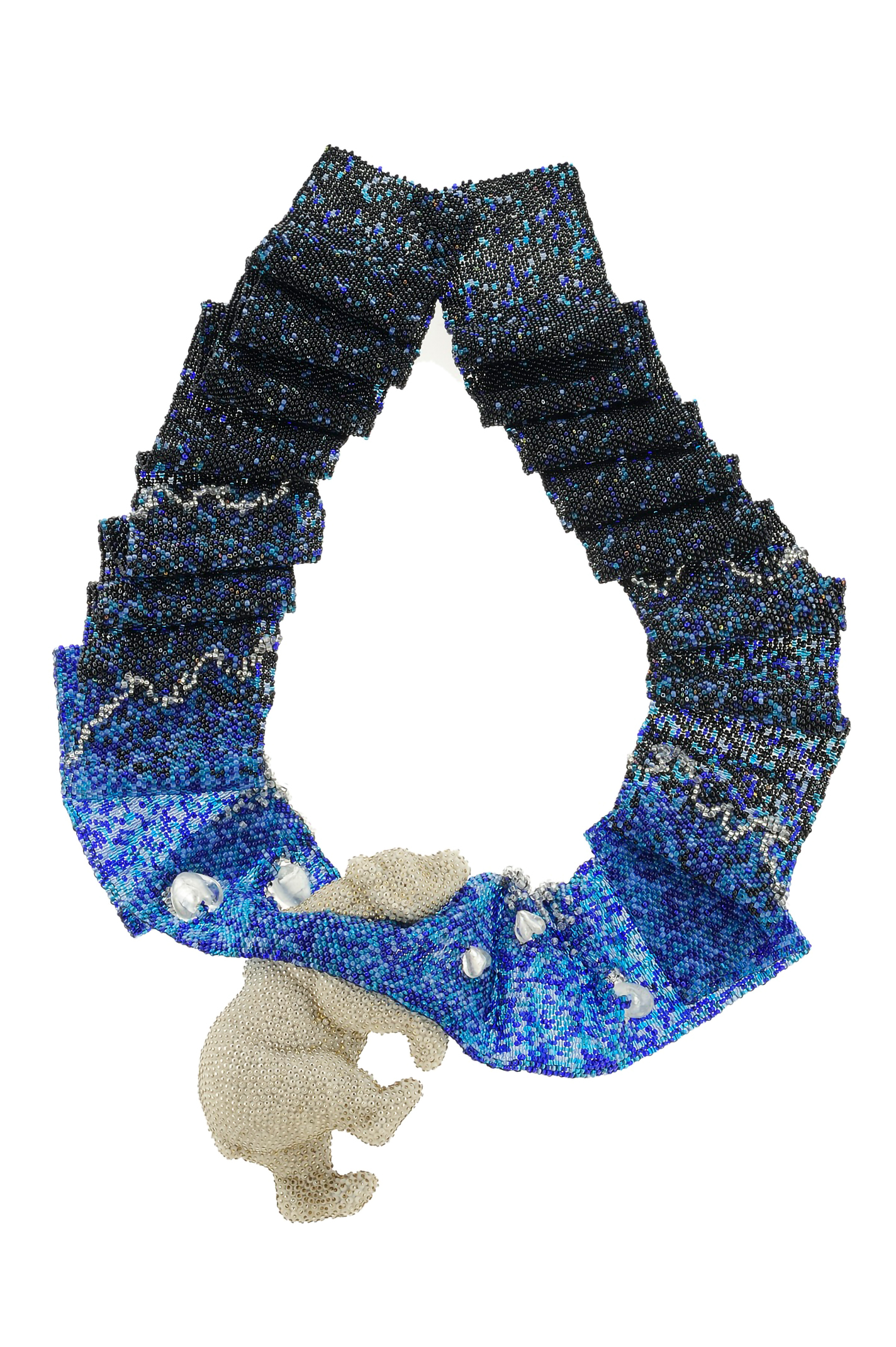
The physical weight of Sari Liimatta’s 42-inch-long beaded neckpiece Hopeless, 2007, reflects the heaviness of its subject matter.
